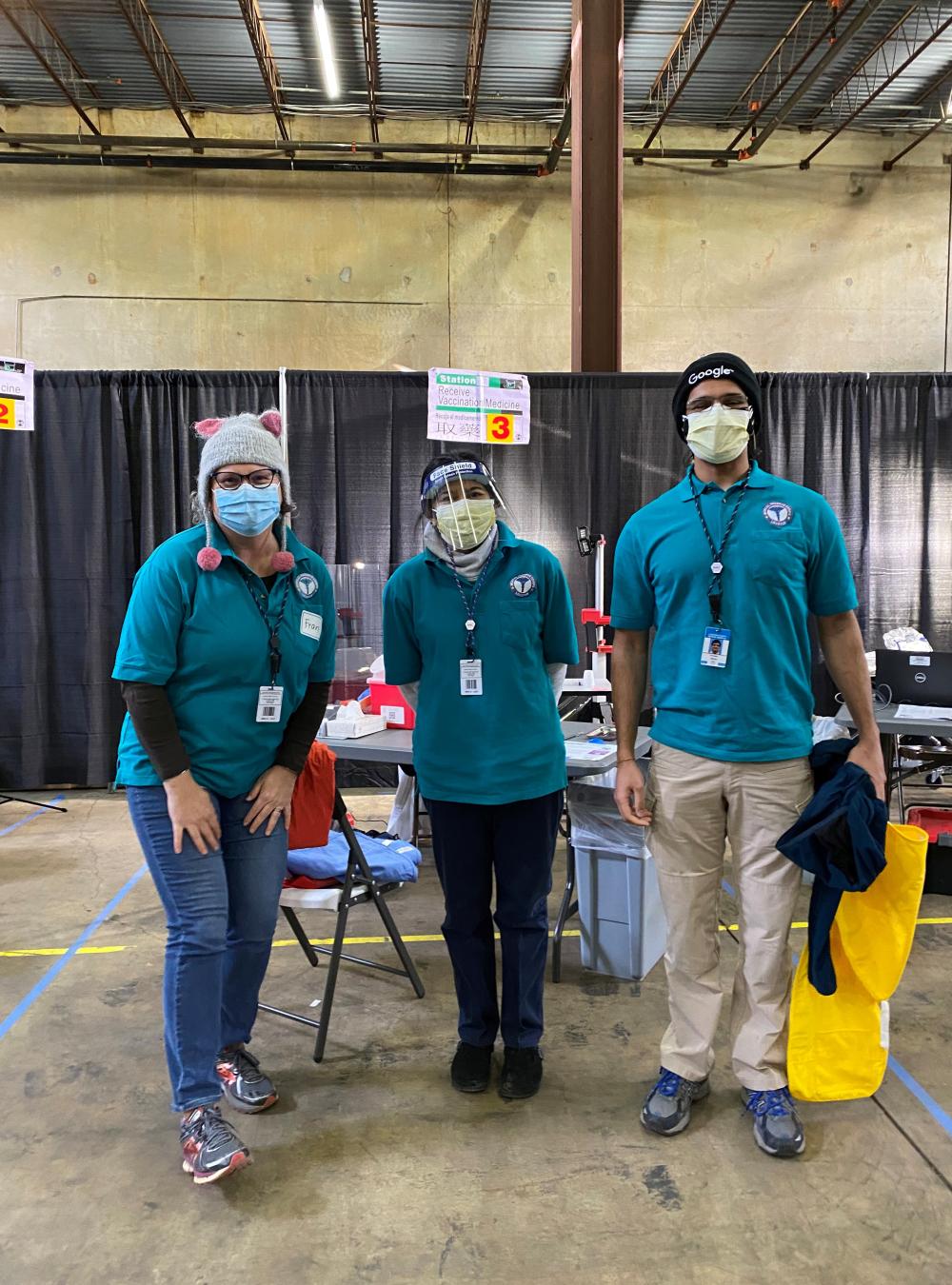Rose Almonte didn’t waste any time once she learned a way to help thwart COVID-19’s impact. The registered nurse joined her county’s Medical Reserve Corps just before the vaccine roll-out. She’s now six vaccination clinics in—and counting.

In the Community: Giving COVID-19 Her Best Shot
MITRE employees take our mission of solving problems for a safer world to heart—and to their communities. Our "In the Community" series highlights the many ways our people make a difference in neighborhoods across the country and around the globe.
Select stories feature employees lending their time, talent, and heart to the fight against COVID-19. MITRE’s Rose Almonte, a registered nurse, jumped at the chance to help turn the tide of the pandemic.
Early on in the pandemic, I became aware of different volunteer roles to support our community. As a registered nurse, I thought for sure there would be a special need for healthcare providers to lend a hand.
That’s how I discovered the Loudoun (Virginia) Medical Reserve Corps. It’s part of the U.S. Department of Health and Human Services’ Medical Reserve Corps (MRC). The MRC trains volunteers to help communities in a crisis, like a hurricane, bioterror event, or epidemic.
Taking the First Steps to Help
I applied for the corps and soon found myself in orientation and training. By May, I was assisting with Loudoun County Health Department’s contact tracing efforts and staffing its COVID-19 hotline.
Late in 2020, the COVID-19 vaccine was ready for rollout, so I jumped at the opportunity to be on the front lines at vaccination clinics. I had many emotions. I was excited, cautious, and relieved that the country had reached this milestone.
I received specialized vaccination training to help at Loudoun County’s first mass vaccination clinic in Sterling, Virginia, on December 28.
Syringes and Stories
Every individual I vaccinate stands out in some way. Generally, everyone is grateful and excited. Many ask to take a picture with me to commemorate the occasion. But there are all kinds of responses to the vaccination process.
A man who came to my station said he’d come to the clinic the day before, but just couldn’t go through with it. He knew he needed the vaccine. I reassured him, answered his questions, and explained side effects, while his buddy at the next table offered to hold his hand.
Another person I vaccinated jokingly asked, “How long until I have my super-powers?”
Making MITRE Connections
This particular clinic site includes 10 to 14 vaccinators, with another 40 to 50 volunteers filling other essential roles. Our clinics vaccinate between 500 and 600 people a day.
When I’m working at a clinic, I always introduce myself and share some personal information with other volunteer vaccinators. We work as a team to keep track of how many open vials are available for use and ensure everyone gets their dose, so we need to get to know each other. This is how I recently met fellow MITRE employees.
I was at the Sterling clinic when I overheard the volunteer at the next table say, “Oh, Rose works at MITRE, too!” It turns out Fran Stites, a corps volunteer, happened to be getting vaccinated that day. Fran mentioned that Armaan Mehta, one of our computer scientists, was working the registration desk. We snapped a picture, of course!
And more MITRE volunteers keep showing up. Renee Rookwood, Sharon Sebastian, Rachel Spencer, Laura Munro, Sarah Corley, and Jerome Cordts are also involved in community vaccination efforts. Vicky Bass is conducting contact tracing as an MRC volunteer for the City of Alexandria, Virginia. (See In the Community: Public Health Up Close.)
Our volunteerism isn’t limited to Northern Virginia. In Atlanta, Ginny Meadows is pitching in for that region’s vaccination efforts, too.
It’s Just the Beginning
Vaccination production continues to ramp up to meet the demand, but I know a lot of us are nervous about getting a turn in line.
My advice? Please be patient. The vaccine should eventually be distributed beyond jurisdictional health systems and health departments, so it will be available soon from your providers’ offices and local pharmacies. Health department leaders are working around the clock to open more sites.
Getting more vaccination sites up and running will require many volunteers. No matter where you’re located, you can find a role to fill. When I joined the corps, the only requirement was a desire to help. The clinic training and orientation began online.
Medical providers like me receive training specific to the vaccines—for example, managing the multi-dose vials and the post-vaccination monitoring procedure. Nonmedical volunteers are tasked with triage, patient flow and social distancing, registration, infection control, and logistics and supply. There’s no better time to step up and lend a hand in ending this pandemic.
Thanks to MITRE’s Civic Time benefit [paid time to employees to volunteer during the workday for causes they care about], I’ve worked at six clinics to date—and counting. As the county has made volunteer shifts more flexible, I can pick a morning or afternoon during the work week to help, or a longer shift over the weekend. My leadership and my colleagues have all been supportive of me.
It’s a great example of MITRE’s culture of community service. I’m honored to play a part in ending the pandemic.
—by Rose Almonte as told to Nancy G. Romps